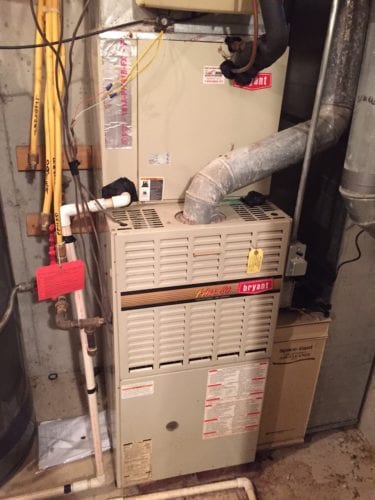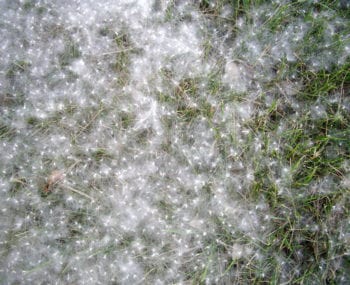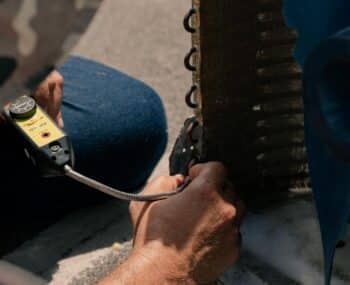Furnace Leaking Water: What Causes It During the Summer?
Updated on 8/17/2023
Is your furnace leaking water? Don’t panic! This article will help you understand what causes water to be found around your furnace during the summer and how to troubleshoot the issue.
What Does It Mean If My Furnace is Leaking Water?
During normal operation, your air conditioner produces a significant amount of water in the form of condensation from your evaporator coil. That water gets channeled to the drain line—most often a 3/4 inch, white PVC pipe—and then flows to a floor drain, sump pump, or another type of drain.
When working properly, the only sign of water should be a periodic dripping noise. You should never see water on or around your indoor system, just hear it. If you do, then it’s a sign that something’s not functioning correctly.
If you’re proactive and have regular preventative maintenance done on your air conditioner, most risks of water damage are mitigated. But if it’s too late and you’re already seeing water around your furnace, here are the likely causes and the steps to take to avoid costly hvac repairs.

Is Water Leaking From Your Furnace?
Schedule Your Repair Appointment Now
Common Causes For Water Leaking Around Your Furnace
PVC Drain Line Plugged
As systems age, dust and dirt can collect on the evaporator coil, falling into and eventually plugging up the drain line. With this restriction, the water will push back into the coil and eventually spill onto the floor.
Filter Plugged
When the filter is plugged, it can reduce airflow through your coil. While this will most likely cause a frozen coil first, sometimes the airflow restriction caused by a blocked filter will cause water to develop.
Drain Pain Has Leak
If water has rested too long on the pan below the coil, rust and holes can develop and allow water to drain.
Problems With Condensate Pump
If your home has a condensate pump, then you have one more electrical component that can break down.
Steps to Stop Water Leaking Around Your Furnace
1. Shut Off System
Look for shutoff switch, which looks like a light switch next to the furnace and coil, and switch it off. If you cannot find this, shut off the system at the breaker.
2. Clean Up Water Quickly
Sitting water will do quick damage to whatever it touches, so be sure to soak it up quickly.
3. Check Filter
Make sure no airflow through the filter has been impacted.
4. Place Vacuum Around PVC Drain Line
Using a water-safe vacuum (i.e. Shop-Vac®), remove any debris and potential clogs. Afterward, turn on air conditioning system and monitor to determine if this fixed leak.
5. Pour Water Into Top of Condensate Pump
If condensate pump does not react, it indicates a mechanical failure. If it does pump the water, then the drain line from pump to drain (or wherever water gets dispersed) is clear.
Call Homesense to Repair Water Leaking Around Furnace
If you’ve taken the above steps and still are seeing water in places it shouldn’t be, give us a call. Sometimes these issues require a quality contractor to disassemble air conditioner and furnace components to diagnose.
Need An HVAC Expert To Check Your System?




